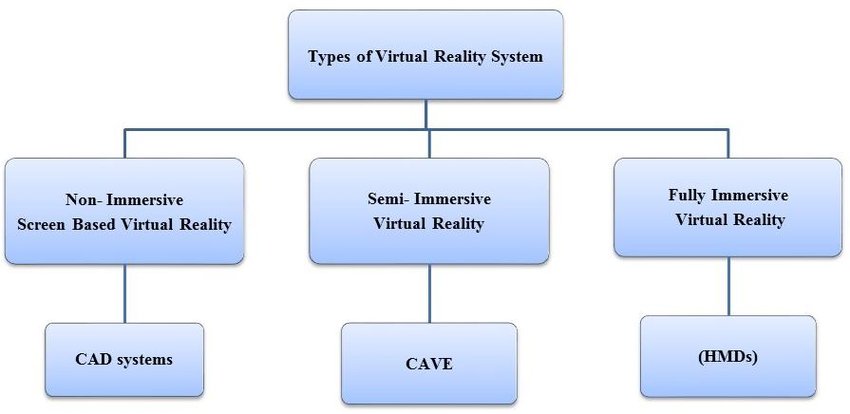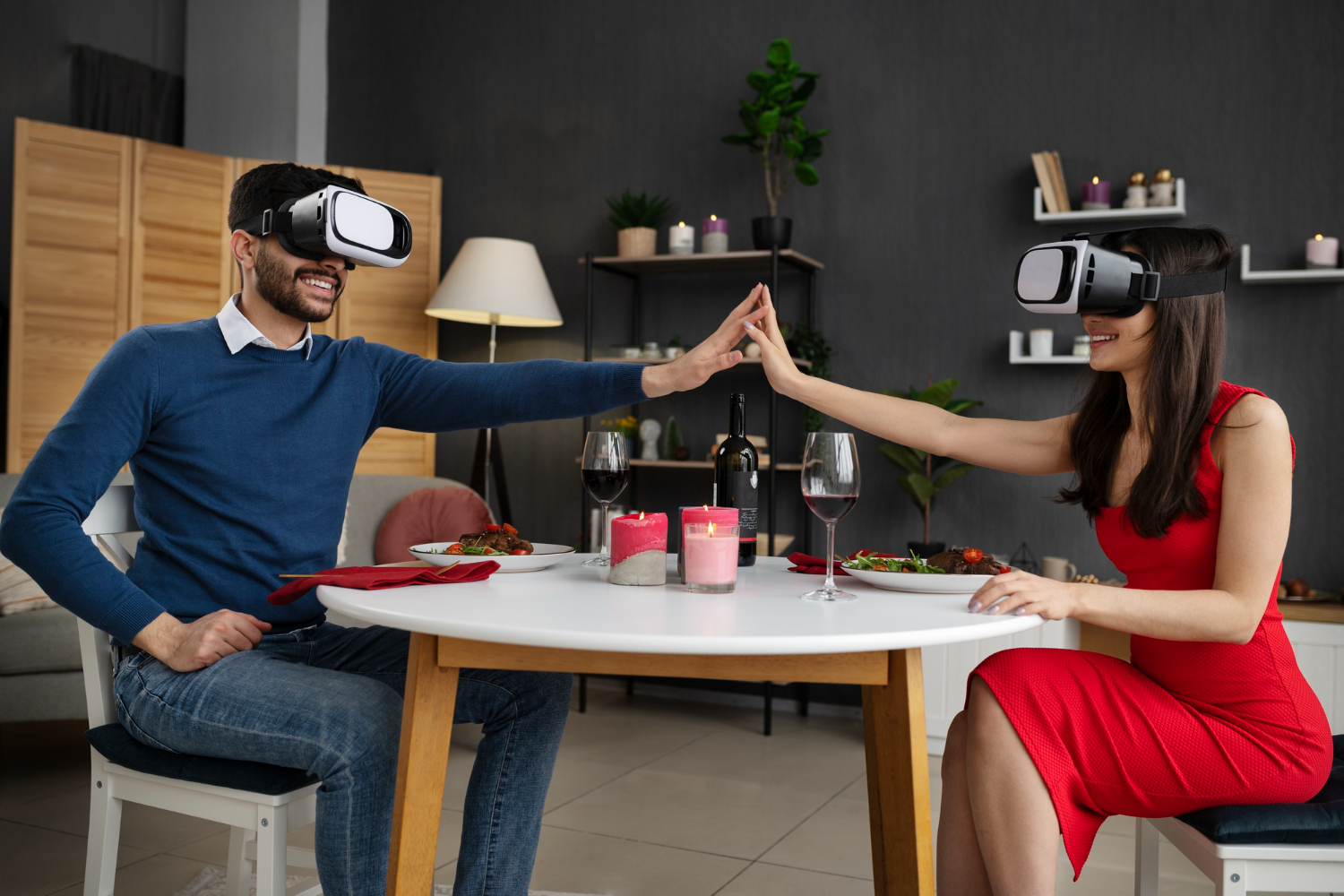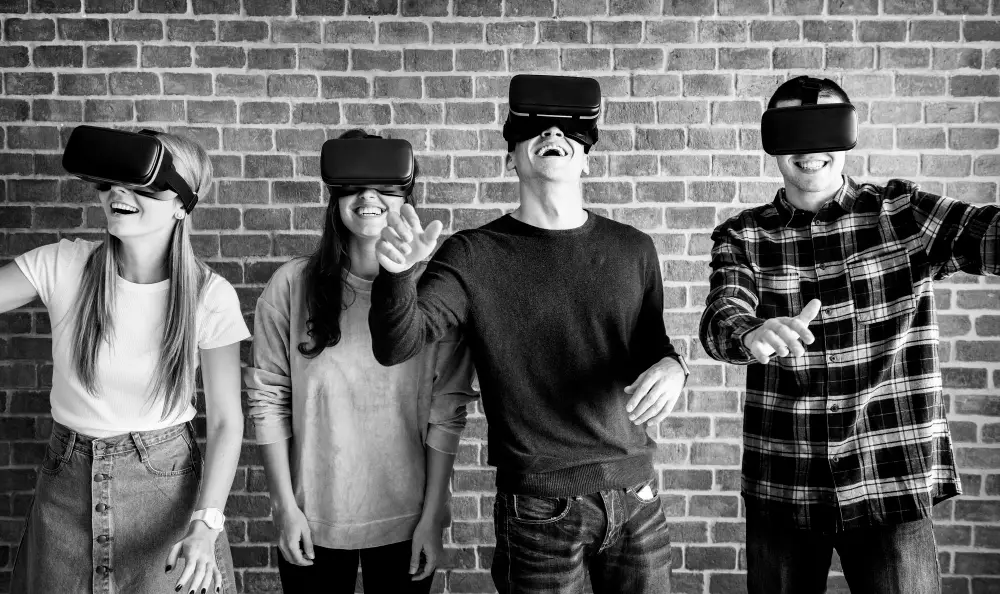Introduction
As we dive deeper into the technological era of Open AI and Machine Learning, a question that keeps popping up is, What is virtual reality? Often abbreviated as VR, virtual reality has become a cornerstone of our digital experiences, but for many, the concept remains elusive.
In this article, we’ll discuss what is virtual reality, how it works, and why it’s such a game changer in the digital world.
Virtual reality (VR), once the stuff of science fiction, has now stormed its way into our everyday lives. If someone had said two decades ago that we’d be exploring digital realms as if they were real, we might’ve given them a skeptical look. Yet here we are, on the cusp of a digital revolution that is reshaping how we interact, learn, and even heal.
What is Virtual Reality?
What is Virtual reality and why we can not ignore it 🙂
At its core, virtual reality (often abbreviated as VR) is an interactive computer-generated experience that takes place within a simulated environment. This environment can be similar to the real world, or it can be fantastical, offering experiences that are impossible in our physical reality.
So, when someone asks, “what is virtual reality?”, think of it as a bridge between our current reality and an entirely new one created digitally.
For Example, Imagine standing at the edge of a cliff, feeling the cool breeze on your face, hearing birds chirping, and seeing the vast expanse of the ocean in front of you. All of this without ever leaving your living room. That’s the magic of VR!
What are the different types of Virtual Reality?
Now that we’ve answered the basic question of “what is virtual reality?”, let’s delve a little deeper into its different types.
As per the ResearchGate, Virtual Reality can be classified in below 3 types

However, we will discuss few more types along with these 3 main types.
Non-Immersive VR
This is the least immersive form of VR. Users can engage with the 3D environment but remain aware of the real world. The experience is usually delivered through desktop-based applications.
Non-immersive VR typically uses standard computer setups with a high-resolution monitor, along with input devices like a mouse and keyboard. Sometimes, joysticks or tracking balls can be used.
For Example: Flight simulation games on a PC where users can look around and interact with the environment but do not feel fully ‘inside’ the virtual world.
Semi-Immersive VR:
This type strikes a balance between non-immersive and fully immersive VR. Users feel more involved with the virtual environment but are still somewhat connected to the real world.
It typically combines large screen projections or multiple TV monitors with additional hardware, like head-tracking devices. The aim is to provide a broader field of view and some interactivity.
For Example: Flight simulators used for pilot training. These systems use a combination of physical and virtual controls along with projection systems to create an immersive experience.
Fully Immersive VR
This provides the most engaging experience, making users feel completely transported to the virtual environment. It aims to stimulate all the user’s senses to achieve a high level of immersion.
Fully immersive VR relies on high-performance computers, head-mounted displays (HMDs) with a wide field of view, and motion-tracking systems. Devices such as haptic gloves and omnidirectional treadmills can be added for enhanced sensory feedback and freedom of movement.
For Example: VR systems like the Oculus Rift, HTC Vive, and PlayStation VR where users are completely immersed in a game or simulation and can interact with the environment in multiple ways.
Augmented Reality (AR) & Mixed Reality (MR)
While not pure VR, AR and MR are worth mentioning due to their close relationship with VR technology. AR overlays digital information on the real world through a device, while MR merges real and virtual worlds to produce new environments where physical and digital objects co-exist and interact.
For Example: The mobile game “Pokémon GO” is an AR experience, while the Microsoft HoloLens offers MR experiences where holographic images are integrated into the user’s real-world view.
WebVR & Mobile VR
These are VR experiences that can be accessed via web browsers or mobile devices. They are typically less immersive than standalone VR devices but offer more accessibility.
Standard web browsers with WebVR capabilities and mobile devices using VR headsets like Google Cardboard or Samsung Gear VR.
For Example: A 360-degree video tour of a historical site that can be viewed on a website or a simple VR game on a smartphone.
Why the Hype? What is Virtual Reality’s Significance?

There’s no denying the excitement surrounding VR. But what is virtual reality’s importance in our everyday lives?
Gaming
One of the most popular uses of VR is in the gaming industry. With VR headsets, players can immerse themselves in 3D worlds and interact with the virtual environment in a way that feels almost real.
VR gaming offers a higher level of immersion and engagement, making games more lifelike and intense.
For Example: Games like “Beat Saber” where players slice through musical notes, or “The Elder Scrolls V: Skyrim VR” where users can explore a vast fantasy world, offer experiences that are enhanced and made more engaging by VR.
Medical Training and Treatment
VR is being used in the medical field for training and treatment purposes.
This results in better-trained healthcare professionals and offers therapeutic methods that might be too challenging or impossible in the real world.
For Example: Surgical simulations can be done in VR, allowing medical students to practice complex procedures without risking a real patient. Moreover, VR has been used for exposure therapy where patients face their fears in a controlled environment.
Real Estate and Architecture
VR can create detailed 3D models of buildings and interiors, allowing people to take virtual tours.
This streamlines the property viewing and design approval process, saving time and potentially reducing costs.
For Example: Real estate agents can show properties to potential buyers without them having to physically visit the place. Similarly, architects can showcase their designs to clients, making any changes in real-time based on feedback.
Education
What is virtual reality if not the ultimate educational tool?
Virtual Reality offers immersive educational experiences, making complex concepts easier to understand.
This hands-on experience increases engagement and retention rates, offering an enhanced learning experience.
Example: Instead of reading about ancient Rome, students can take a VR tour, walking around the Colosseum or exploring the streets, getting a firsthand view of history.
Virtual Tourism
VR allows users to explore places around the world without leaving their homes.
Virtual tourism opens up opportunities for people who might not have the means or ability to travel, making world exploration more accessible.
For Example: Museums like the Louvre offer virtual tours, enabling visitors to explore its halls and artworks. Similarly, nature enthusiasts can virtually trek through the Amazon rainforest or climb Mount Everest.
Military and Law Enforcement Training
VR provides safe environments for military and police personnel to practice combat scenarios, hostage rescue, or other high-risk situations.
This kind of training improves response times, strategic thinking, and the overall safety of military and police operations.
For Example: Soldiers can engage in battlefield simulations, experiencing various terrains and combat situations without the real-world risks. Police can practice handling volatile situations, ensuring they’re better prepared in real life.
What are the Challenges While Using Virtual Reality?
After discussing what is virtual reality? in detail, let’s explore what are the challenges while using Virtual Reality.
Technical Limitations
Hardware Challenges: To truly understand what is virtual reality, one must first appreciate its technical demands. High-quality VR demands robust computing power. Whether it’s the graphics processing units (GPUs) or the displays in the VR headsets, the hardware must be top-tier to eliminate latency problems. Furthermore, for untethered systems, there’s a fine balance between battery power and performance. The more powerful they are, the faster they consume battery life.
Resolution and Field of View: Considering what is virtual reality at its best? It’s an environment where visual inconsistencies are almost invisible. For that, VR devices need a high resolution and an expansive field of view. A low resolution can result in the “screen door effect,” making pixel lines visible. On the other hand, a limited field of view can disrupt the immersive experience.
Physical and Psychological Effects
Motion Sickness: To grasp what is virtual reality in its full experience, one must also acknowledge its side effects. Due to discrepancies between visual input and the sensations from the inner ear, users might experience motion sickness or even dizziness.
Eye Strain and Fatigue: Continuous exposure to the close proximity of VR screens and the three-dimensional content can lead to eye strain or occasional headaches.
Content Creation
High Development Costs: Reflecting on what is virtual reality’s potential in content, one finds it’s not without hurdles. Crafting immersive VR content demands more resources than traditional formats. It involves creating 360-degree visuals, integrating spatial audio, and often adding interactive elements.
Lack of Standardization: There are numerous VR platforms and devices out there. Without a unified standard for VR content creation, developers face challenges ensuring their content is accessible across different systems.
User Interface and Interaction
Lack of Intuitive Interfaces: With the evolution of what is virtual reality, traditional interaction methods have become obsolete. Innovative interaction methods like hand tracking or gaze-based controls are emerging but can sometimes feel unfamiliar to users.
Limited Physical Feedback: Understanding what is virtual reality’s most desired feature? Many would say realistic tactile feedback. While there are strides being made in haptic technology, mimicking a genuine sense of touch in the virtual realm remains an ongoing challenge.
The Future of Virtual Reality
In understanding what is virtual reality, it’s also crucial to consider its future. With advancements in technology, VR will become more accessible, realistic, and integral in various sectors.
Technological Advancements
With every passing year, VR tech is becoming more advanced. We can expect even more realistic simulations, better hardware, and more intuitive user experiences.
Expanding Markets
From education to healthcare, various sectors are now tapping into the potential of VR, leading to market expansion.
Integrating with Other Tech
Imagine VR combined with AI or IoT. The integration possibilities are endless and exciting!
Societal Shifts
As VR becomes mainstream, we’ll see societal shifts. From how we consume content to how we connect with others,VR will reshape our world.
Conclusion
So, what is virtual reality? It’s more than just a tech buzzword. It’s a doorway to new experiences, a tool for education, a means for enhanced training, and so much more.
As technology progresses, our understanding and applications of VR will only deepen, and its impact on our lives will be undeniable. Welcome to the future, where virtual becomes reality.
FAQs

What is Virtual Reality?
Virtual Reality (VR) is a simulated, computer-generated environment that allows users to immerse themselves and interact within a 3D world that isn’t physically present.
What equipment is needed to experience VR?
Typically, a VR headset is required, and depending on the experience, motion controllers, sensors, and a compatible computer or console might also be necessary.
How is VR beneficial for education?
VR offers experiential learning through virtual field trips, interactive 3D lessons, and immersive environments, potentially improving engagement and information retention.
Can professionals benefit from VR?
Professionals, especially in sectors like medicine, engineering, and architecture, can use VR for risk-free training, collaborative designs, and to visualize projects before their actual realization.
What are the common challenges faced in VR?
Some challenges include potential health concerns like VR motion sickness, the high cost of advanced VR setups, a limited range of quality content, and the need for adaptability in traditional settings.
Are there any health concerns associated with using VR?
Prolonged use of VR can sometimes lead to motion sickness or eye strain. It’s advisable to take regular breaks and ensure the VR content is age-appropriate.


2 thoughts on “What is Virtual Reality in 2023 : Explore The Fascinating Aspects of VR”